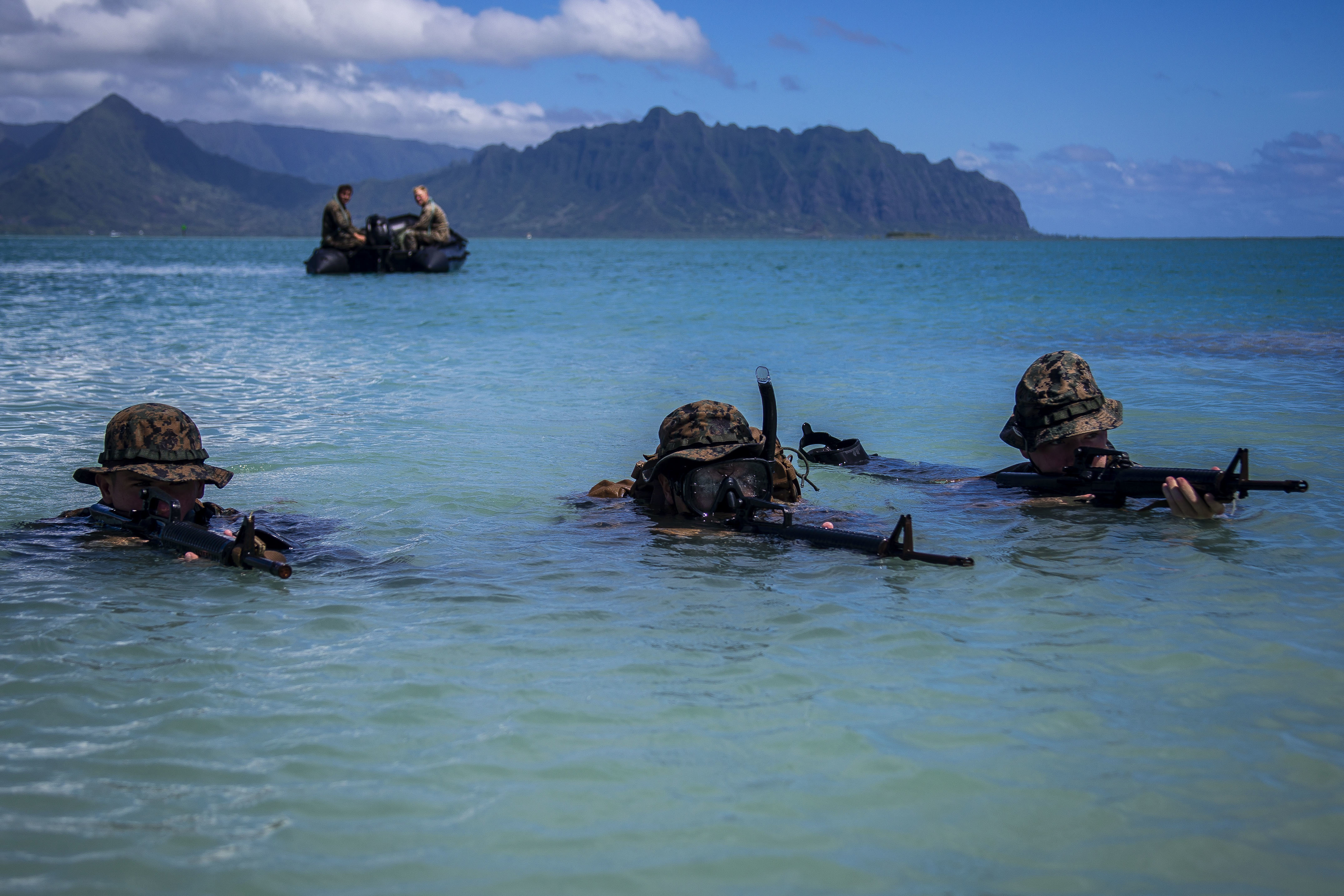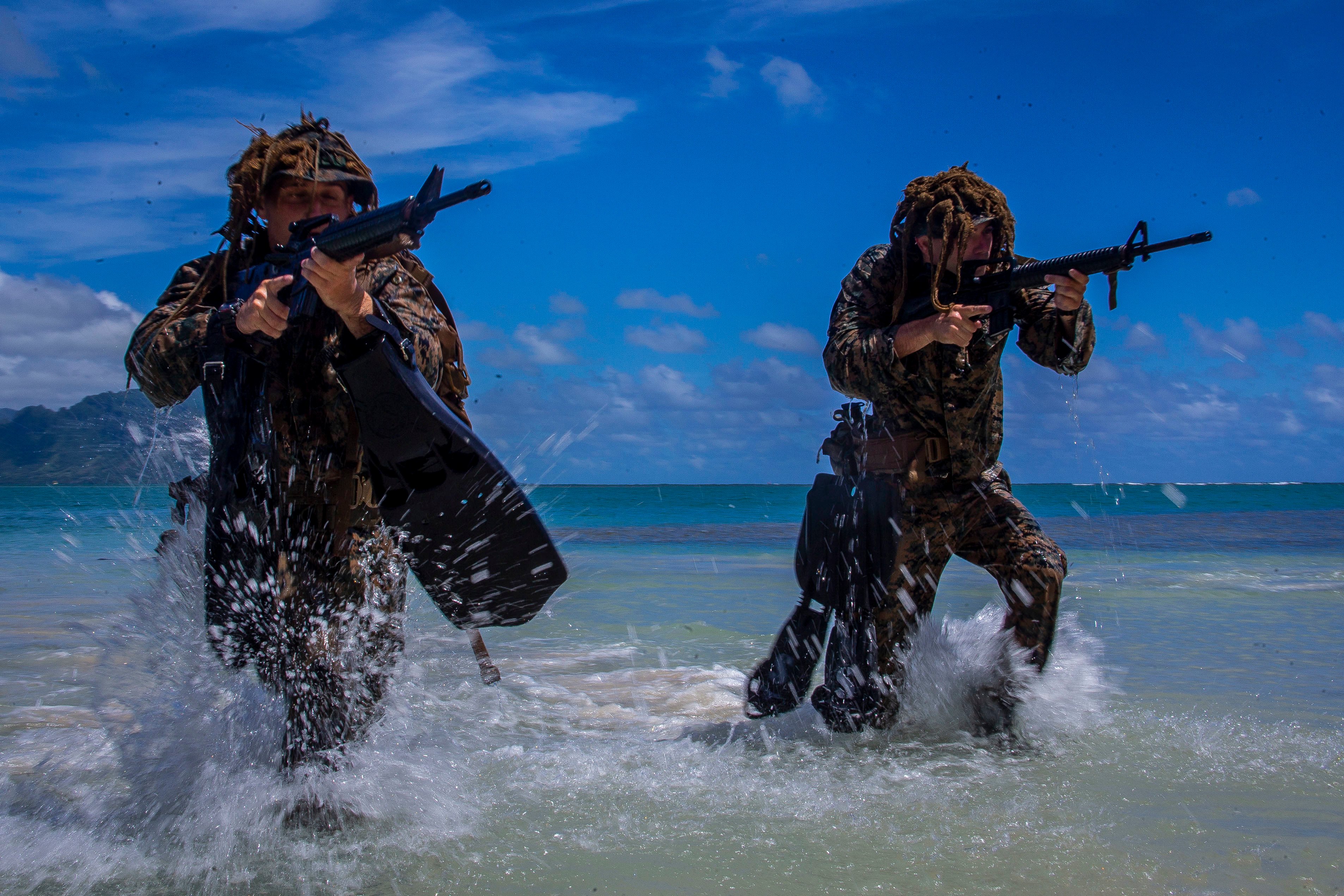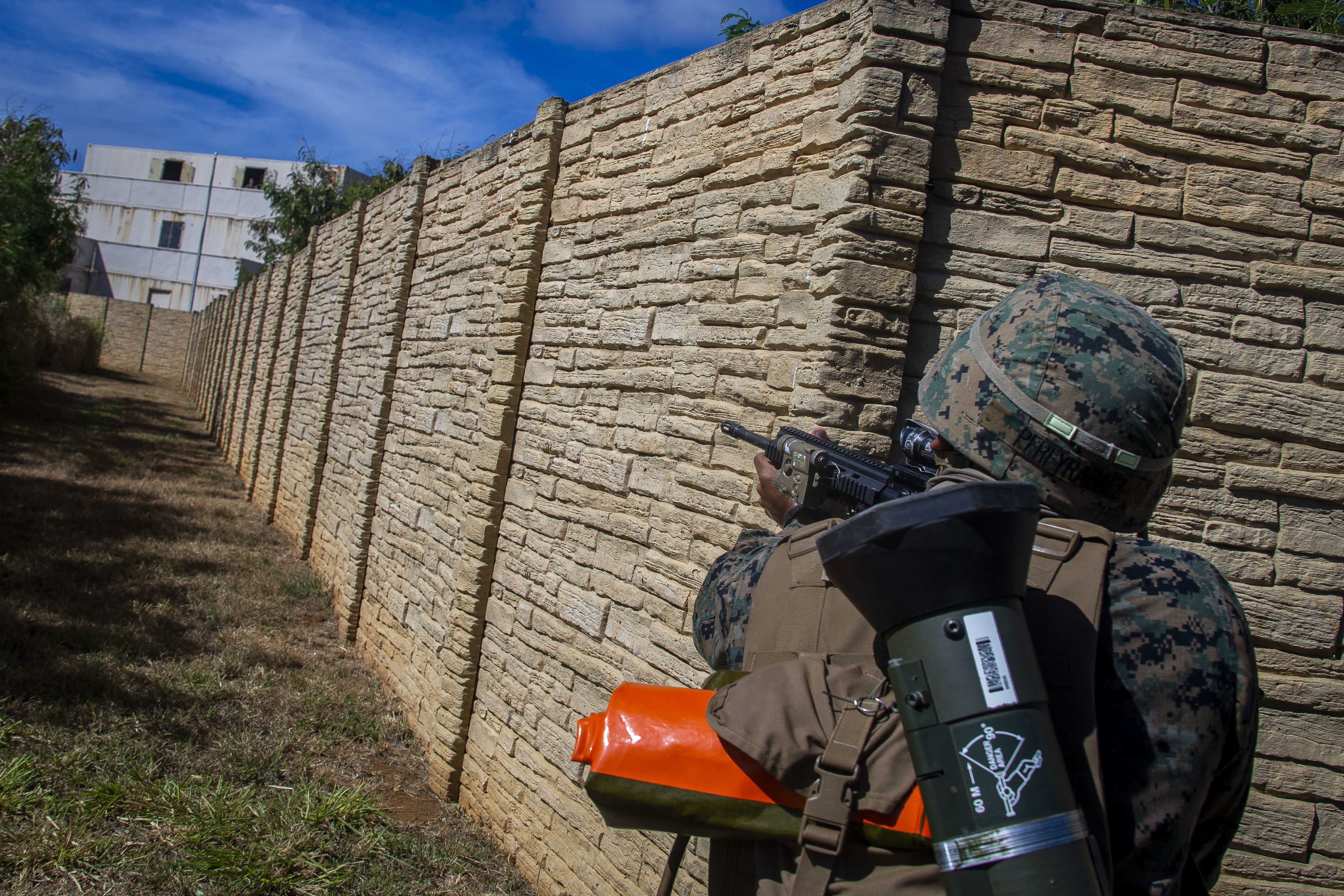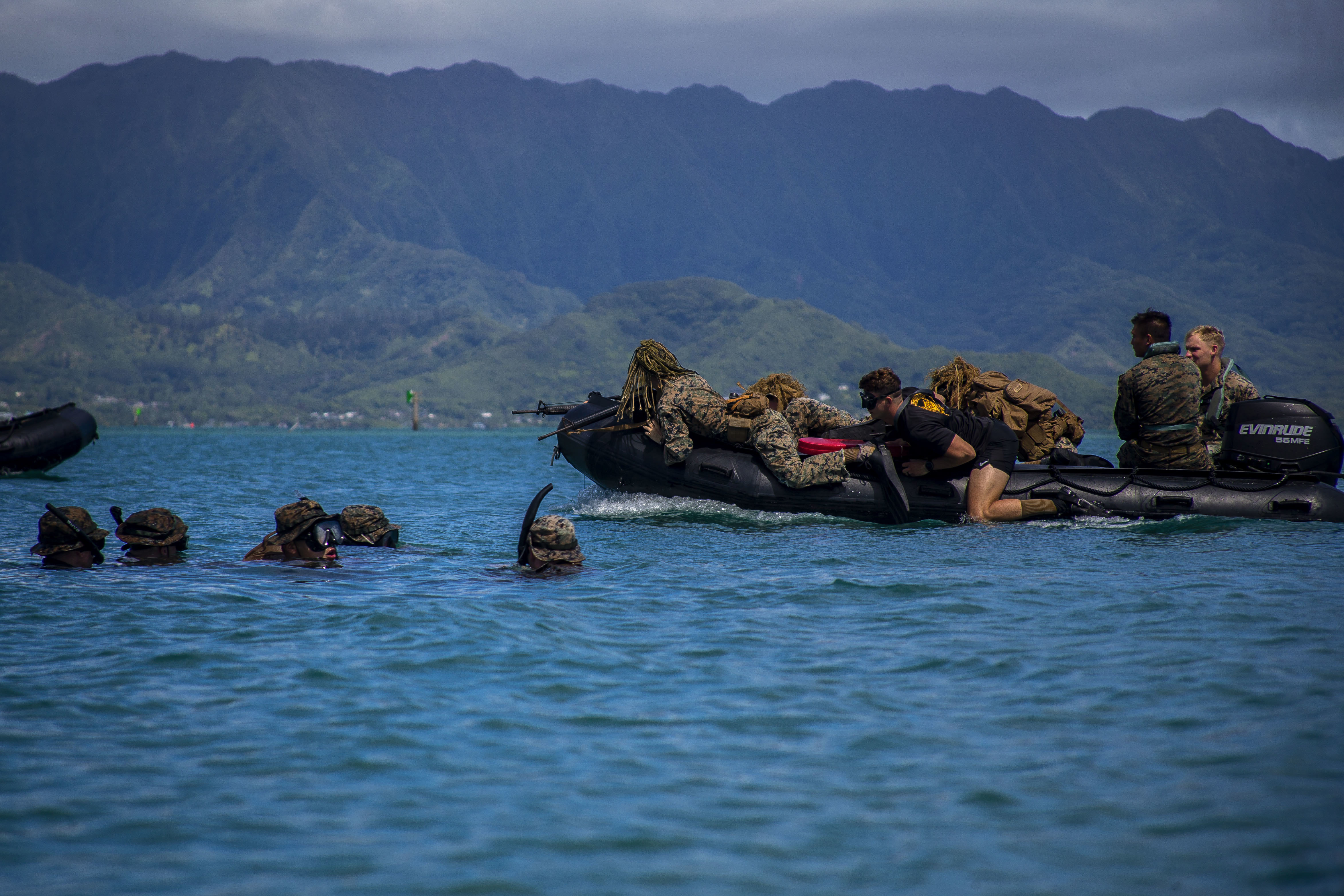
The Marine Corps is asking hard questions about its Force Design 2030 plan and gaining answers through a flurry of experimentation and wargaming, to help quickly reshape the force to deter or win a fight against China.
As part of Phase III of the Force Design development, leaders say there is a “campaign of learning approach” that is constantly generating new questions faster than the service can answer them, to ensure nothing is overlooked as the Marine Corps divests its legacy equipment to pay for the biggest force overhaul in decades.
Commandant of the Marine Corps Gen. David Berger said today during a speech the Modern Day Marine virtual conference that the intense effort that went into producing the Force Design 2030, released just eight months after he took command, intentionally left some questions unanswered, so that they could be informed by quantitative analysis of wargames and experiments.
“We’re not going to determine that in a crisis or in a conflict that we will only need long-range weapons systems or that we only need short-range weapon systems. We need both. We’re going to have to operate and fight in depth. The magic of it is to find the right balance between the capabilities we need and how much stuff costs – what we can afford to do. I’m very confident that we’ve made the right decisions after one year of studying it pretty hard and left enough margin, left enough room for us to learn in the next two or three years and make adjustments going forward,” he said.
“We don’t know yet exactly the right balance, and that’s intentional. Not because we haven’t thought our way through it, but we need to rely on our own Marine units experimenting in real tactical scenarios to inform back to the Marine Corps: ‘Ok, here’s the right balance you need of aircraft and ground fires. Here’s the right balance you need of satellite communication and [high frequency] and [very high frequency]. Here’s the right balance you’re going to need in terms of operational logistics down to tactical.’ We intentionally did not try to get down to 100-percent answer because we can’t. We’re leaving a fair amount of margin over the next two or three years for the Fleet Marine Forces to inform Force Design.”

Brig. Gen. Eric Austin, the director of the Capabilities Development Directorate, said during a panel presentation Sept. 22 at Modern Day Marine that his team was overseeing the question-asking half of this process. During Phase I and II of writing the first iteration of Force Design 2030, CDD had 12 integrated planning teams that tackled different topics. He’s standing up IPTs again that will ask hard questions of the plan that exists today and continue asking questions based on new information coming out of ongoing modeling and simulation, wargames and live-force experimentation being led by the Marine Corps Warfighting Lab.
Austin said the groups are still being stood up – one looking at the role of ground combat tactical vehicles just stood up this week – and should wrap up their work by January. Decisions coming out of the iterative process between CDD and MCWL are already shaping budget decisions: Austin said his office is already deeply engaged in planning for FY 2023, even as the deputy commandant for programs and resources is still awaiting congressional approval of FY 2021’s spending plan and finalizing a proposal for FY 2022.
Austin acknowledged the tight timeline but said it was necessary, since Berger’s goal is to have the reshaped force reach initial operational capability in Fiscal Year 2023 and full operational capability in FY 2030. The work must also be resource-constrained, with the assumption that no new money is coming their way and anything new must be paid for through divestments elsewhere – though Berger said in his speech today that “if Congress wants to provide more funds, of course we’re going to apply them the way they would expect us to apply them. But we’re doing this from within our own check book, within our own bank account. That meant you needed to decide what to get rid of. All of us love the things we’re getting rid of. We love them. We have to make hard decisions about what we must retain. There is some risk in doing this. When you’re transiting your organization from what it is doing today to what it is in the future, there is some risk in that transition. But I am convinced – 100 percent – that the risk of not doing anything, or incrementally updating our current systems, is much, much greater.”
When Berger released the Force Design in March, he said one of the areas he was still struggling with, and that would be a focus of ongoing work, is the role of light armored vehicles and specifically the new Advanced Reconnaissance Vehicle (ARV) that will replace the legacy Light Armored Vehicles.
Asked by USNI News to use ARV as an example of how Phase III is playing out, Austin said during a media roundtable following his presentation that “yesterday we kicked off our ground combat tactical vehicle strategy IPT, which was specifically asked for by the commandant to consider not only the ARV but the full complement of our capabilities. So we have people from all over Headquarters Marine Corps, all over the Fleet Marine Force at CDD right now; they’re having just that discussion. And then we’ll flesh it out, again, create some learning demands, flesh it out with some of the exercises and experimentation. But we know that we need to get after this in the near term; it’s an important decision and an important requirement, but we’re not yet to a defined requirement.”

Even as CDD comes up with specific questions about ARV and sends them to MCWL to answer, the acquisition community is taking steps now so that, as soon as a final decision is made, they can act quickly to meet the commandant’s 2030 timeline.
John Garner, the program executive officer for land systems, said during the media roundtable that Force Design Phase III and an analysis of alternatives for ARV were both ongoing, and “until those are complete and until the Marine Corps leadership makes a decision on the path forward, we continue to track and be involved in the [Office of Naval Research] effort that’s being done to develop some potential solutions, and we are aware of some industry work that’s being done with [internal research and development funding] to do some work.”
PEO LS is tracking multiple potential paths forward, “so the good news will be that once we do get the requirement and once the decisions are made, we’re poised to move out on any of a number of different potential paths to meet this need for the Marine Corps.”
Scott Lacy, the MCWL chief of staff, used another new program as an example of how the lab was trying to rapidly answer questions to inform requirements that CDD could pass to the acquisition community.
“Light Amphibious Warship, for example: if the question comes to us is, where is this most effective or useful under the rest of the capabilities we’re developing – whether it be sustainment, whether it be maneuverability – that’s the question that we would then take for further development of concepts as well as wargaming to try to sharpen those hypotheses and turn those into questions that we can continue wargaming and experimenting with and ultimately help feed that information back into requirements development,” he said during the media roundtable.
Lacy said another key area of focus for the lab, in addition to helping define the need for new systems like LAW and ARV, is better defining the Marine Littoral Regiment that will be central to the Marines’ vision of how to operate in the Indo-Pacific.
Lacy said it will need to operate inside the enemy’s weapons engagement zone, operate in complex littoral waters, project both seaward and landward, and hit targets towards the sea and from the sea.
“We’ll be experimenting with this force option, we will have an experimental Marine Littoral Regiment based on units that are largely already in Hawaii, and we will begin testing out this thesis and seeing if the experimentation process proves out that hypothesis that this force option is capable of doing the things I described,” he said.

His boss, MCWL Commanding General Brig. Gen. Benjamin Watson, said during the Modern Day Marine panel that the MLRs and the Expeditionary Advance Base Operations concept more broadly were the predominant focus at MCWL in recent months. MCWL is finalizing a “tentative manual” for the concept, something of a how-to guide that will inform further concept development and wargaming efforts and will identify gaps in tactics or gaps in equipment to support EABO – all based on hard data, rather than just observations.
“In the last year, in response to the increasing demand for data and for analytic fidelity or evidence to further justify investment decisions, we’ve complemented our legacy wargaming tools, which are traditionally very qualitative in nature, with some computer-based analytic tools to give us a quantitative basis, or at least a blend of qualitative and quantitative analysis to our wargaming insights,” Watson said.
“And all of this is a bridge to the eventual development of the Wargaming and Analysis Center on Marine Corps Base Quantico, which we’re due to break ground here early in ’21, that will give us really a transformational, multi-security-level capability that will be available to the Marine Corps and to our naval and joint force partners.”





